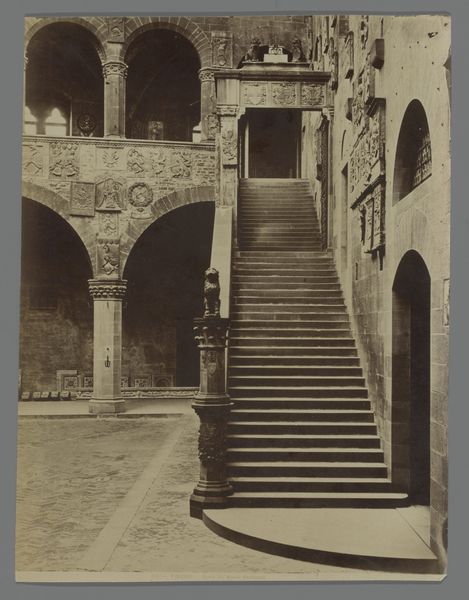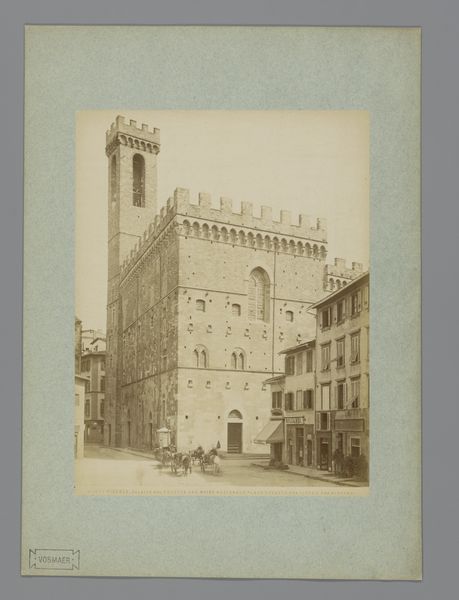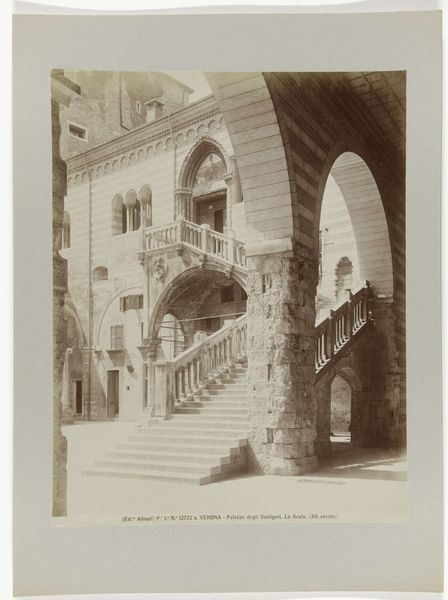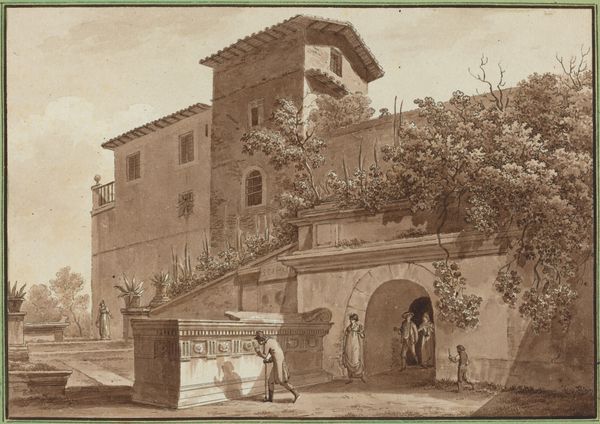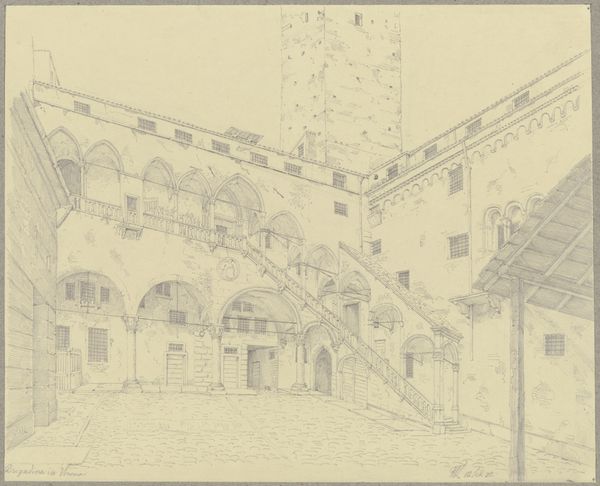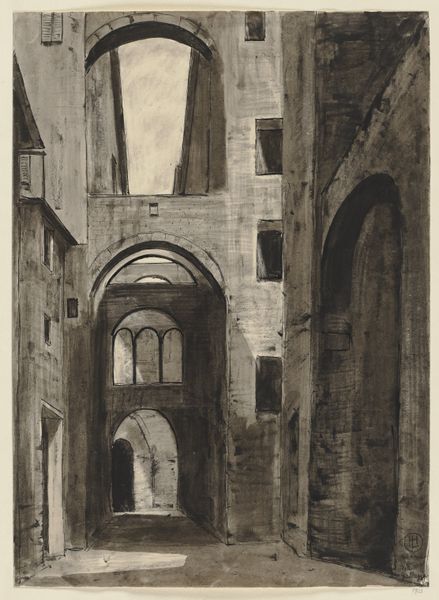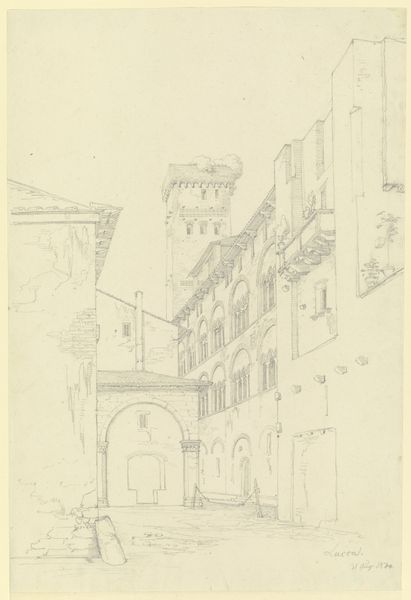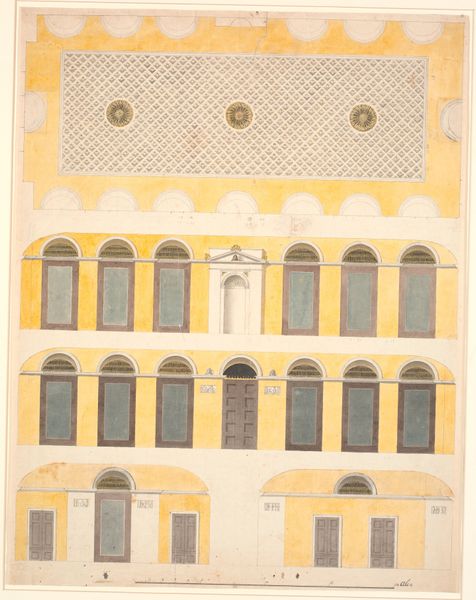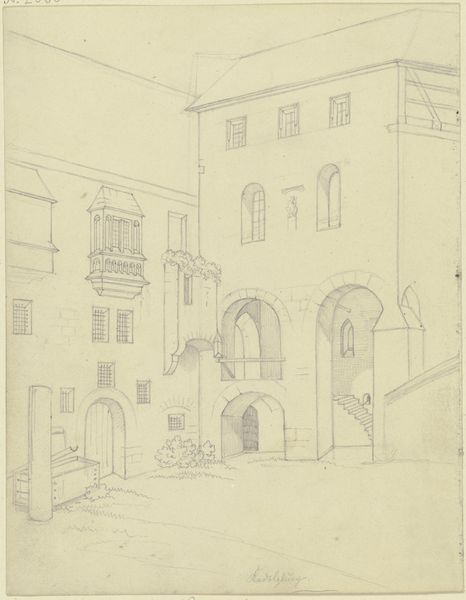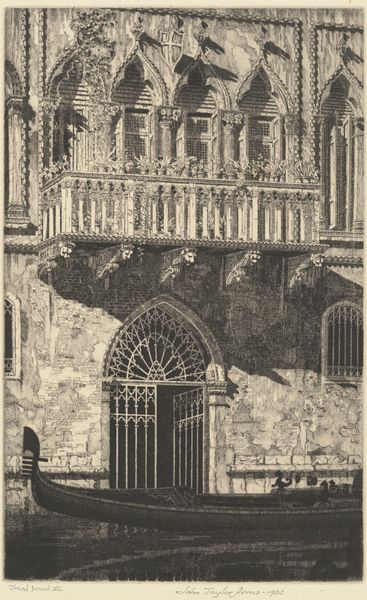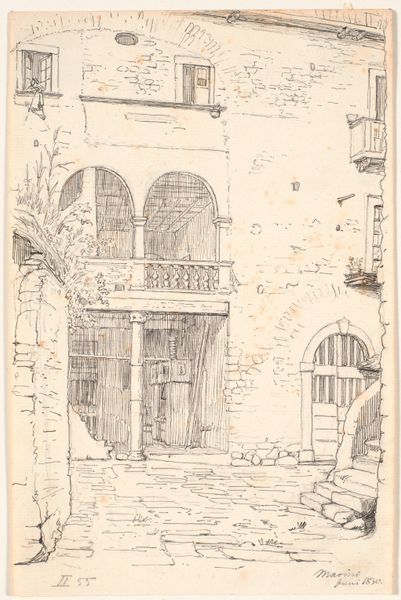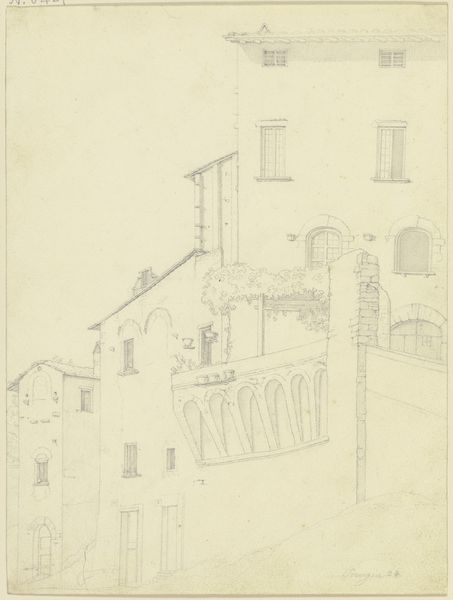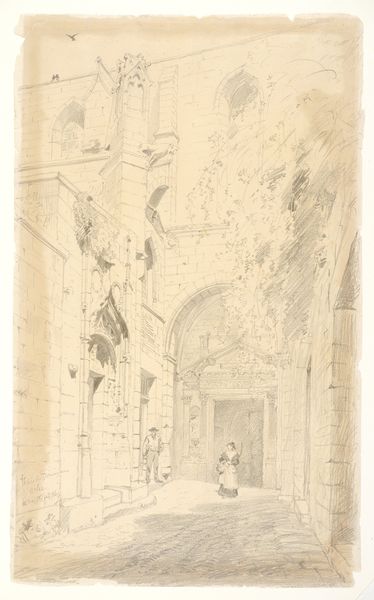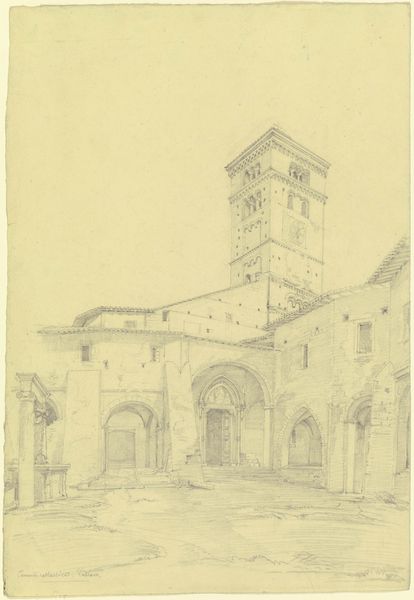
drawing, print, watercolor
#
drawing
# print
#
landscape
#
perspective
#
watercolor
#
cityscape
#
italian-renaissance
#
watercolor
Dimensions: 23-5/8 x 17-1/2 in. (60.0 x 44.4 cm)
Copyright: Public Domain
Curator: What a fascinating scene. We're looking at "View of the Bargello Courtyard in Florence," an architectural cityscape rendered in watercolor, dating from around 1800-1900. It's part of the Metropolitan Museum's collection. What's your initial impression? Editor: It feels like stepping onto a stage set. The muted palette evokes a sense of timelessness, and that play of light and shadow really emphasizes the physicality of the stone, drawing attention to its texture. Curator: Indeed. Notice how the coats of arms and various symbols displayed across the building facades reflect the cultural memory embedded in architecture. They tell stories of families, power, and the city's rich history, almost acting as a visual record book for the inhabitants and the visitors to the space. Editor: Exactly, and that meticulous detail must have been labor-intensive. Think of the artist repeatedly loading the brush, controlling the water content… the artist's process mirrors the actual building, block by block, symbol by symbol. It speaks to value being placed on craftsmanship. Curator: The perspective, I think, also guides our reading of this courtyard; those long shadows remind me that history's gaze shapes how we perceive cultural emblems in this building. They aren’t presented uniformly; they shift with the light and time. Editor: And speaking of history, the wear and tear implied by the color variations in stone hint at the countless hands that have touched and maintained this structure, pointing to a longer timeline of consumption of these very building materials that shape this courtyard. Curator: It brings up interesting questions. Are these emblems meant to communicate pride, authority, or simply civic identity? And how has their meaning changed over time? I think this painting really encourages a viewer to question the purpose of symbolic visual language. Editor: Ultimately it demonstrates how the tangible remnants of Renaissance urbanism serve as powerful materials and vessels of identity construction, and also invites conversations of legacy today, especially given contemporary urban issues related to who gets to make a landmark and public art and what materials get the attention. Curator: Precisely. Considering how symbolism functions over long stretches of time makes it an intriguing puzzle. Editor: Absolutely, a lot of what we take for granted hides intense history embedded in everyday things. This exercise of historical imagining through artistic labor has brought new levels of contemplation.
Comments
No comments
Be the first to comment and join the conversation on the ultimate creative platform.
